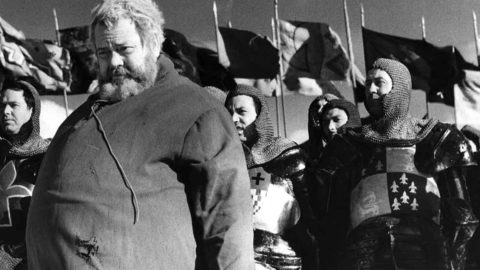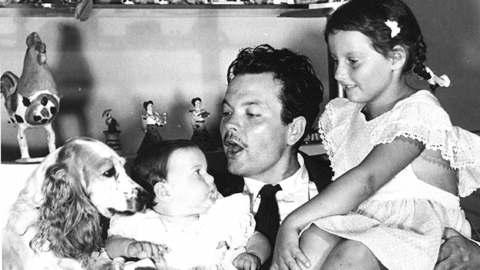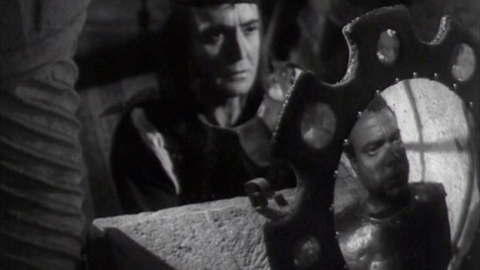By Nick Pinkerton in the November-December 2018 Issue
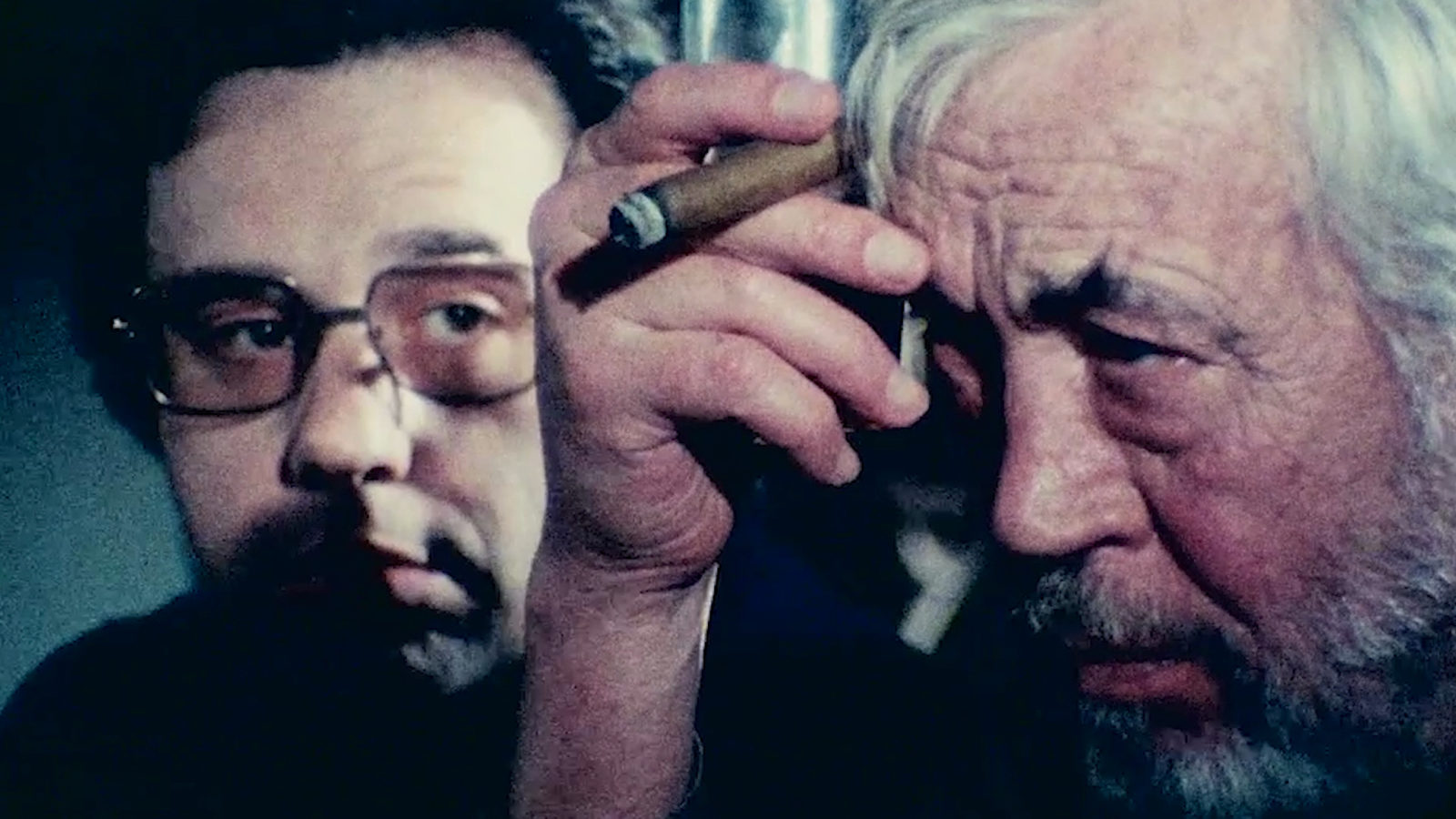
Review: The Other Side of the Wind
(Orson Welles, USA, Netflix, Opening November 2)
Arriving decades too late and right on time, the final assemblage of Orson Welles’s legendary incomplete incompletable last film is a work as sharp as a slap, as bracing as a martini tossed to the face. Perhaps no unfinished film since Eisenstein’s ¡Que viva México! has been the subject of more writing and speculation, but here are the basic details: on and off between 1970 and 1976, Welles and a rotating cast and crew—working at the Southwestern Studio in Carefree, Arizona; the Beverly Hills home of one of the film’s stars, Peter Bogdanovich; a drive-in theater in Reseda; and other sundry locales—shot the raw material of the movie. Most of it occurs over the course of a single night, at the 70th birthday party of Jake Hannaford, a two-fisted film director with credits stretching back to the days of the silents, and a macho man somewhat after the model of Ernest Hemingway or Norman Mailer—or John Huston, who happens to plummily play the role, looking very much the cat who swallowed the canary as he slices through the gathering, lacing conversations with choice aperçus as he passes by.
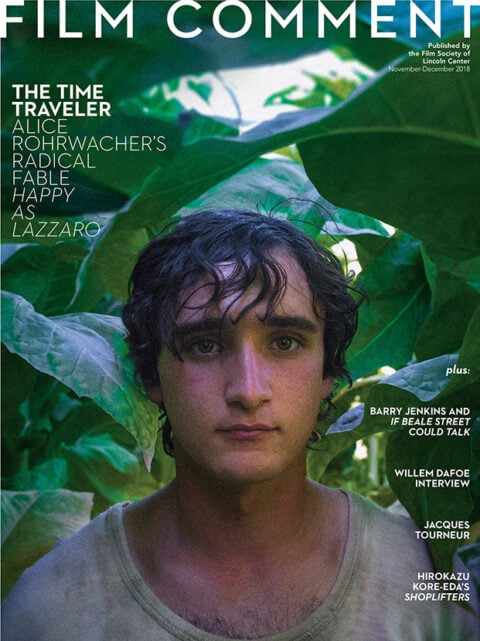
From the November-December 2018 Issue
Also in this issue
The film’s subject matter is in keeping with Welles’s ongoing fascination with powerful men brought low, while the freewheeling forces at play might recall Mailer’s Maidstone (1970)—a party panorama, ad-libbed-seeming dialogue, a confrontation between Greatest Generation tough guy mores and the young, androgynous hippies—more than, say, the world of Chimes at Midnight (1965). The movie is a roving, pacing, rough-and-ready thing, relying largely on handheld camerawork, the footage, even in the space of a single scene, moving freely between color and black and white. As Bogdanovich explains in a preamble that’s quite the clunkiest thing in the movie, what we are watching has been stitched together from footage shot during the party by a small feeding frenzy of film freaks who have been bussed out to Hannaford’s ranch especially for the purpose of immortalizing the glorious ham.
“You old guys are trying to get with it?” asks an unimpressed studio executive while watching a rough cut of Hannaford’s latest. “Is that what this movie’s about?” The film’s crisis is set in motion when that exec pulls the plug on the project, already abandoned by its leading man, a surly, remote longhair named John Dale (Bob Random) whom Hannaford had been grooming as his latest discovery before the kid stormed off set. We will continue to see the film within a film, titled The Other Side of the Wind, as it unspools in bits and pieces through the party, where Hannaford is scrambling to line up cash for his movie—an unfinished film running through this so-long-unfinished film. The party scenes are cut into prismatic flashes by Bob Murawski, following the model of the edited material that Welles left behind, while the movie-movie stands out in high-finish 35mm widescreen, seemingly intended as a parody of both Antonioni-esque anomie and Corman-esque exploitation. Welles’s DP on the shoot, Gary Graver, who didn’t live to see The Other Side of the Wind completed, had previously worked on such titles as Al Adamson’s 1969 biker flick Satan’s Sadists, and so he knew what he was doing.
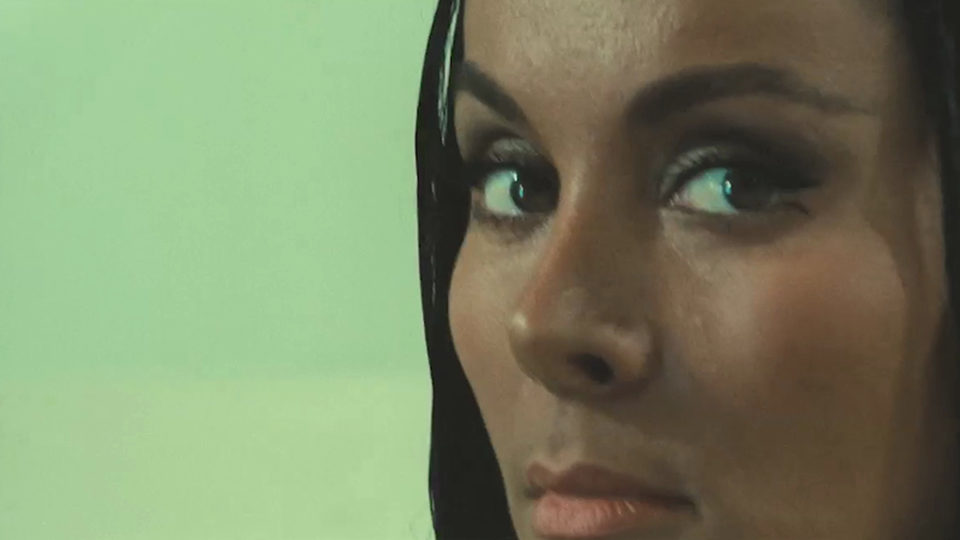
Even working in art-house burlesque mode can’t put a damper on Welles’s innate film sense. His late Hannaford film has something of the leering, persecutorial quality of The Trial (1962), as well as an eroticism heretofore unexplored in Welles’s films. In this movie-within-the-movie, Dale silently dogs the steps of a Native American woman (Oja Kodar, Welles’s Croatian mistress and credited co-writer), and eventually they become lovers, screwing in a moving car during a rainstorm and on a rusty bedframe in an abandoned studio-lot approximation of a small town Main Street, USA, with Kodar brandishing castration-anxiety-inducing scissors while Hannaford issues instructions from off camera like a heavy-breathing old lech. The encounter between aging talents who came up through the censorious studio era and the new tell-it-like-it-is permissiveness gave us some of the most extraordinary films of the 1970s—Alfred Hitchcock’s Frenzy, or Huston’s own Fat City (both 1972)—and The Other Side of the Wind is both a comment on and artistic expression of this same unbuttoning: Welles is letting his freak flag fly while telling the story of a grizzled all-American superstud’s confrontation with the fact of the camera eye’s basic bisexuality, and his suppressed inner sissy.
There are women at the party—Lilli Palmer, wearily elegant as a kind of imitation Dietrich; Susan Strasberg as a relentless, Pauline Kael–inspired film critic; and Cathy Lucas as the barely legal, vacant-seeming teenager that Hannaford takes up as arm candy, mostly interested in sending her to fetch innumerable drinks—but Hannaford is a man’s man, and the night belongs to his cronies, a crusty clique whose numbers include Paul Stewart, Cameron Mitchell, Norman Foster, a medallion-swinging John Carroll, and Bogdanovich. His character, hung with the double-take sobriquet Brooks Otterlake—had Welles been reading Pynchon?—is, as Bogdanovich was at the time, a critic turned Hollywood director, on the way up as Hannaford goes down, the Hal to his hero’s Falstaff, indebted to his mentor but unable or unwilling to advance him completion money for his film. (Hannaford, one may note, sounds a bit like “Can’t afford.”) It is Strasberg’s character who, using her knowledge of Hannaford’s biography and films, descries something a little fishy to his preference for the company of men, concluding that the “Rosebud” to unlock this particular living legend is repressed same-sex desire.
The final truth of this remains ambiguous through the film’s closing shot, a melancholy evocation of O. Winston Link’s photograph Hotshot Eastbound, in which the drive-in has emptied out. In This Is Orson Welles, a book of interviews conducted with Bogdanovich during a period roughly corresponding to the beginning of The Other Side of the Wind’s shoot, Welles rails against the interpretation of art through the amateur psychoanalysis of artists. He describes in that same book his process of writing an exhaustive, multi-generational backstory for Hannaford, of which only a little makes it into the movie—a reference to the family theatrical tradition and a forebear, Junius Hannaford, whose name connects to both Julius Caesar and the family of John Wilkes Booth, cementing the film’s running association between show business and the act of killing.
So has Welles come to bury Hannaford, or to praise him? Or is it a little of both—an ambivalence that may be misconstrued at a moment when it is little understood that the discourse of a movie character is not necessarily the discourse of the movie itself, and when the depiction of toxic masculinity running amok in Hollywood risks resembling a celebration of the same. A mordant eulogy for an old guard that’s outlived its time—Dennis Hopper can be briefly viewed, seeming to urge on the coming revolution—The Other Side of the Wind is a portrait of the genius as charming sham, all bluster and hot air. Debunking a legend, it completes a legacy.
Nick Pinkerton is a regular contributor to Film Comment and a member of the New York Film Critics Circle.



